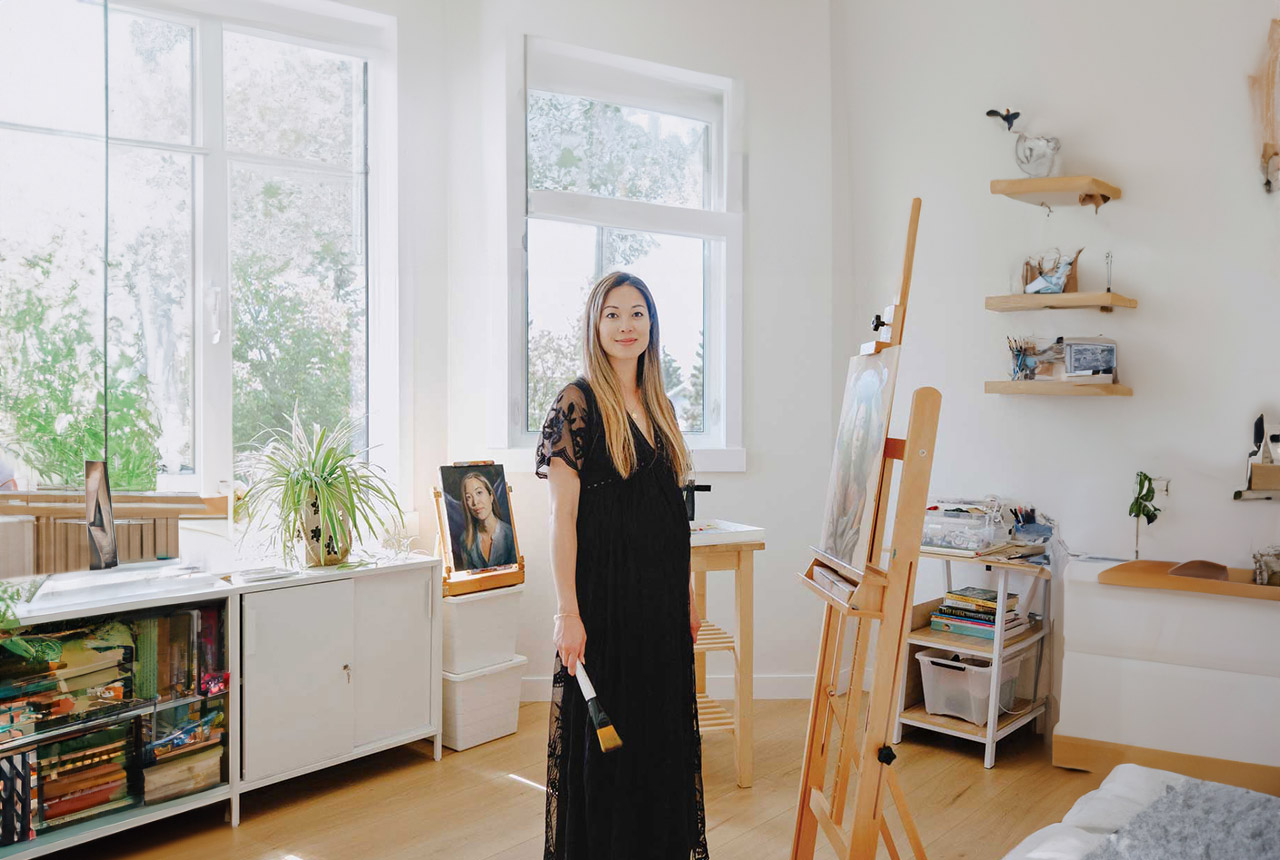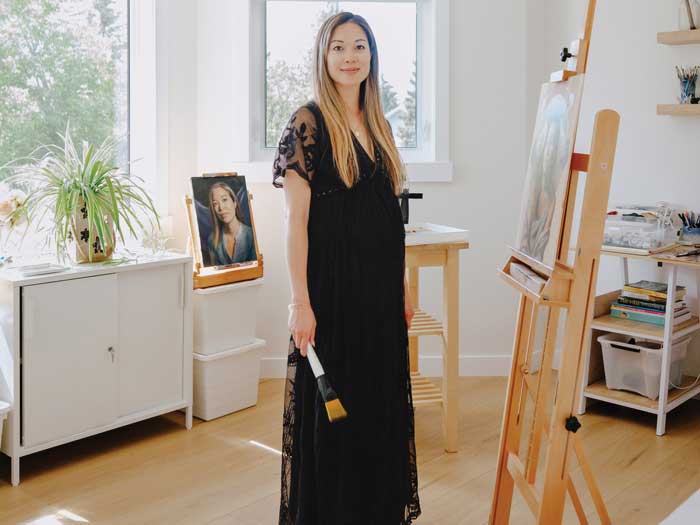
Meet the CPA whose art is off the charts
 “Communicating complex information in a digestible way is a skill that has helped me so much in being an art teacher,” says Keay (Photograph by Allison Seto)
“Communicating complex information in a digestible way is a skill that has helped me so much in being an art teacher,” says Keay (Photograph by Allison Seto)
WHAT’S YOUR BIGGEST CHALLENGE AS AN ARTIST?
Every artist goes through this thing called imposter syndrome where they’re doing it, but they don’t feel like they’re a real artist. I think the reason why is because we spend so much time alone, painting or making our craft. It can feel very disconnected to the real world. But, for me, every milestone—like my first commission or first exhibition—made me feel closer to being a real artist.
WHEN DID YOU FEEL LIKE YOU “ARRIVED” PROFESSIONALLY?
The moment I felt like a real, professional working artist was when I started teaching art. I was finally able to share my knowledge of what I’ve learned in this field and to build a strong, long-lasting relationship with my students. That was one of the most fulfilling things of being an artist. That was when it clicked for me.
HOW DID YOU BALANCE BEING AN ARTIST IN THE BEGINNING WHILE STILL WORKING AS A CPA?
When I was working full-time in San Francisco, I was already pursuing art outside of my day job. I was painting in my bedroom before I went to work in the morning and all day on weekends. And, weeknights after work, I’d network. Sometimes I’d even paint some more later at night, if I had the creative capacity to do so.
HOW LONG DOES IT NORMALLY TAKE YOU TO COMPLETE A PAINTING?
It always surprises people how long it takes to complete a painting. A 16-by-20-inch canvas can take about 20 to 30 hours, but spread out over several weeks. You always need fresh eyes to look at a painting before you work on it again.
WHAT DRAWS YOU TO HUMAN SUBJECTS?
I like the challenge of painting a person because you can tell right away when something is off on someone's face—it's less forgiving than other subjects. Once you get the expression, the results are so rewarding. They immediately come to life.
HOW HAVE YOUR SKILLS AS A CPA HELPED IN YOUR ART CAREER?
Communicating complex information in a digestible way is a skill that has helped me so much in being an art teacher. When I was working as a CPA with engineers and senior executives on development projects, I often had to summarize complex information concisely. This skill is instrumental when I'm simplifying art concepts to students or explaining the process of a commission painting to clients.
Both accounting and art are about learning skills in bite-sized pieces, repeating them and mastering them. Accounting and art both take a lot of grit to be successful and a lot of practice.
MEET OTHER CPAS
Read about the accountant-turned photographer, the CPAs using innovation to fight climate change and this year’s inductees into the Canadian Accounting Hall of Fame.